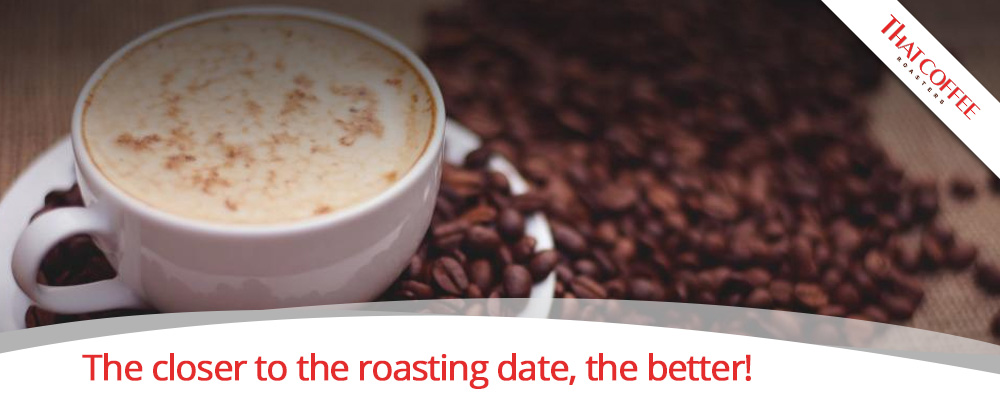Why You Should Care About Roasting Date

In general, all types of consumers may think that all the products they buy in a supermarket are fresh and newly delivered. As a rule, every product arrives on the shelves and is sold, then it is replenished, and so the circle continues, preventing any item from being bought after its expiration date. In the world of coffee, this situation also happens. Coffee usually has expiration dates that tell you until when you can consume the drink. However, this indicator does not reflect the real freshness of the coffee. Believe it or not, this is given by another factor: the roasting date.
WHY IS THE ROASTING DATE IMPORTANT?
In reality, the roasting date can tell you a lot about coffee, especially about its freshness and flavor. Although making good coffee at home is usually not a very demanding task, you will always need to have the necessary elements to prepare it in the best way. The most important ingredient will always be coffee and its quality; this, as you must imagine, depends on several factors.
CONSIDERING THE DEGASSING AND OXIDATION
Why should you consider these two concepts? Both processes play a key role in producing and delivering good coffee. As already mentioned in the article “Degassing Roasted Coffee,” degassing is directly related to the rest time between roasting and grinding or packing.
During this degassing process, the roasted coffee releases CO2 that accumulates inside the bean due to the heat. The waiting time can be several days depending on the type of roasting and the type of coffee. If you don’t let this time come to an end, you may witness what is known as “blooming,” a phenomenon that causes coffee to puff like a mushroom when it gets in contact with the hot water. And what happens to brewed coffee when this reaction occurs? It loses taste and body, generating a watery product.
In the end, knowing this detail allows you to have better discernment when it comes to identifying whether your coffee is stale or not correctly degassed since if the roasting date is near, the chances of the coffee going bad are lower.
ARE OTHER THINGS AFFECTING COFFEE’S QUALITY?
Also, understanding the degassing process additionally allows you to know what happens once the coffee is exposed to the environment for too long. Although expiration dates indicate when it is best to consume a product, in the context of coffee it is not a sign of freshness. Many factors can affect the taste and aroma of the coffee, including the oxidation process. Once the carbon dioxide is released, it is replaced by oxygen. This element can oxidize the coffee beans components, making the product stale.
The further away the roasting date is from the day the coffee is purchased, the more likely it is that the coffee will not have the same properties and quality. Oxidation can begin once the packaging is opened. Sometimes even while it is on the shelf! Its duration will also depend on the material used and how well sealed it is.
As you can see, the coffee production process is more complex than you can imagine. Variables including roasting date, that may influence the quality of the product are considered when creating a quality product. That’s why at That Coffee Roasters, we make sure that the roasting, grinding, and packaging conditions of our Colombian coffee are adequate. This to avoid any change in the properties of our products.
Learn more about our coffee variety and all the procedures we perform to give you the best quality! Follow us through our social networks. If you have any questions, don’t forget to comment!
